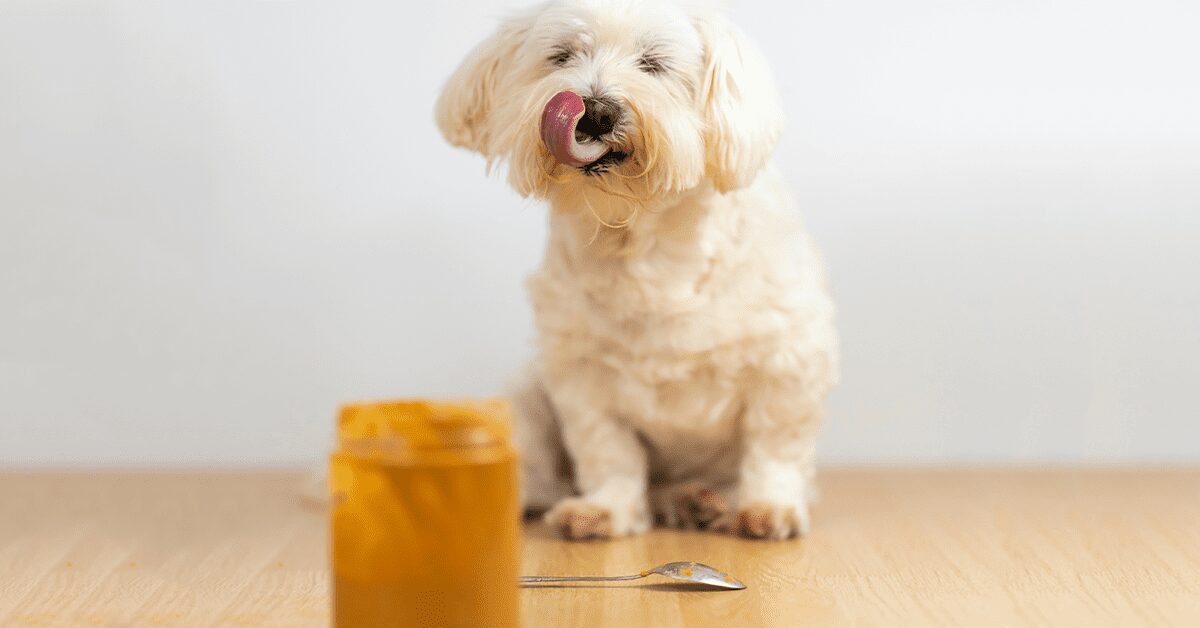Key Points
- Xylitol is a type of sugar alcohol that causes hypoglycemia and liver problems in dogs.
- Symptoms of xylitol poisoning range from sluggishness and decreased activity to seizures and comas.
- Immediate treatment is essential if your dog has eaten a product containing xylitol.
Not entirely sure what xylitol is? You’re not alone. Few people are familiar with the substance – and even fewer people know it’s incredibly toxic for dogs – despite being found in countless food, beauty, and toiletry products. In fact, cases of xylitol poisoning in dogs are on the rise as the substance is used as a sugar substitute in more and more products.
While xylitol ingestion can be hazardous and sometimes fatal, most dogs recover from xylitol poisoning with quick veterinary attention. Stay vigilant and keep your pup safe by learning to recognize common symptoms and xylitol-containing products.
If you suspect your dog may have eaten xylitol, immediately contact your veterinarian or the Pet Poison Helpline.
What is xylitol?
Xylitol is a natural product found in several fruits and vegetables. Xylitol can also be extracted as a sugar alcohol from birch tree bark and corn. This product is safe for humans and is often used as a sugar replacement for people trying to lose weight or stabilize blood sugar levels.
Unfortunately, xylitol is not always included in ingredient lists, making it tricky to identify. Beware of anything listed as “sugar alcohol,” “birch sugar,” or “wood sugar,” as these are alternative names for xylitol. Also, watch out for low-sugar or sugar-free foods and beverages.
Products that typically contain xylitol
The products that contain xylitol may surprise you! Here are a few to be weary of:
- Sugarless gum and breath mints
- Toothpaste and mouthwash
- Chewable vitamins
- Supplements
- Over-the-counter medications, including cough syrup
- Lip balm
- Baby wipes
- Nut butters, including peanut butter
- Condiments like barbecue sauce, ketchup, and maple syrup
- Sugar-free baked goods, candies, and ice cream
Take some time to familiarize yourself with foods safe for dogs and those that should be avoided at all costs.
Causes of xylitol poisoning
The canine pancreas mistakes xylitol for natural sugar and releases insulin as a response. That insulin removes existing blood sugar instead of xylitol, causing your dog to experience hypoglycemia or low blood sugar.
In low doses, xylitol can cause hypoglycemia in dogs. In high doses, xylitol can elevate your dog’s liver enzymes and cause mild liver problems. In severe cases, it can lead to liver failure.
Symptoms of xylitol poisoning
What happens if your dog eats xylitol? The first symptom of xylitol poisoning in dogs is usually vomiting or diarrhea. Xylitol also causes your dog’s blood sugar to drop, so they may show signs of hypoglycemia, including:
- Sluggishness and decreased activity
- Weakness
- Difficulty standing
- Collapse
- Seizures
- Coma
The effects of hypoglycemia typically set in after 10-60 minutes, but in rare cases, they can take several hours to develop. If a low dose of xylitol is consumed, your dog will likely show hypoglycemia symptoms. However, if a high amount of xylitol is consumed, they may experience liver failure.
You should immediately take your dog to the veterinarian if you suspect they’ve eaten xylitol. Don’t wait for symptoms to develop because your dog’s condition can worsen if more time passes without treatment.
What to expect at the vet’s office
If you think your dog has eaten any amount of xylitol, seeking veterinary help is crucial. This may mean heading to your closest 24/7 veterinary ER. Your dog’s course of treatment will depend on a few factors, like the quantity of xylitol ingested and if hypoglycemic signs and symptoms are present.
If your dog isn’t showing any clinical signs or symptoms yet, your vet may induce vomiting to prevent your dog from absorbing more of the toxin. On the other hand, if your dog is already showing signs of hypoglycemia, it will likely need intravenous dextrose – or sugar injections – to restore its blood sugar to a healthy level. Your vet may also want to see the packaging of the product your dog ate to determine how much xylitol they ingested, so keep that handy if possible.
Most likely, your pet will need to be monitored for 12-24 hours. In addition to intravenous dextrose, your pet may need other intravenous fluids and liver medications to treat liver damage.
What is a low dose versus a high dose of xylitol in dogs?
The general rule of thumb is that 0.1 grams or more of xylitol per kg of your dog’s body weight is considered toxic. Just one piece of gum can have .3-1.15 grams of xylitol, meaning even a 100-pound dog can be at risk of symptoms from one piece.
Recovery and care
The good news is that most dogs recover from xylitol poisoning, but timely veterinary intervention is a critical part of the process. Recovery is generally best for dogs who receive treatment before symptoms and clinical signs appear and is most prolonged and challenging when signs of liver failure are present.
How to prevent xylitol accidents
The best way to prevent xylitol poisoning is to keep your pups away from products containing this substance. Check the labels on your products and understand which ones could have this harmful substance for dogs. Keep sugar-free and low-sugar products out of reach, and double-check the ingredients in peanut butter before you purchase it.
Above all, it’s important to puppy-proof your home by keeping all products with xylitol far from your dog’s reach. From raiding your purse for sugar-free chewing gum to jumping onto the counter for a sugar-free cookie, dogs can still get into mischief despite your best efforts. Finally, never use human toothpaste on your dog’s teeth; opt for dog-friendly toothpaste instead.
The bottom line
While your dog can recover from xylitol poisoning, it’s still a severe and potentially life-threatening issue. Remember to look at the nutrition label whenever you plan to share food with your pup. Look out for the other terms for xylitol like “sugar alcohol” or “birch sugar” to avoid any accidents!
Call your veterinarian or the Pet Poison Helpline at (855) 764-7661 if you think your pup may have eaten xylitol.
Xylitol and dogs FAQs
What happens if a dog eats xylitol?
Xylitol causes hypoglycemia in dogs and potential liver problems. Symptoms range from vomiting and weakness to seizures and collapse, making it incredibly important to seek help immediately if your dog eats a xylitol product.
How much xylitol is toxic to a dog?
While large amounts of xylitol tend to cause more severe problems, any quantity can be dangerous, depending on the dog. For small dogs, especially, a small piece of gum can be harmful. According to the Pet Poison Helpline, the benchmark for determining xylitol toxicity is .05 grams per 1 pound of body weight.
What is the difference between xylitol and sorbitol?
Like xylitol, sorbitol is an artificial sweetener widely used to replace cane sugar. However,unlike xylitol, sorbitol is not toxic to your pup. However, it can lead to diarrhea and an upset stomach in large quantities.
What are the possible effects of xylitol on humans?
While xylitol is highly toxic for canines, humans can safely use and consume xylitol products. It’s safe and can be beneficial and effective at warding off cavities and oral bacteria, in addition to being a low-calorie and diabetic-friendly sugar replacement.
Does pet insurance cover xylitol poisoning in dogs?
Pet insurance can help you pay for unexpected accidents and illnesses by reimbursing you for eligible vet bills. Depending on your pet insurance plan, you may get help covering qualified expenses associated with xylitol poisoning diagnosis and treatment, helping you focus more on care and less on cost.
- https://www.fda.gov/consumers/consumer-updates/paws-xylitol-its-dangerous-dogs#:~:text=Symptoms%20of%20xylitol%20poisoning%20in,%2C%20incoordination%2C%20collapse%20and%20seizures
- https://vcahospitals.com/know-your-pet/xylitol-toxicity-in-dogs
- https://www.akc.org/expert-advice/health/dangers-of-xylitol/




